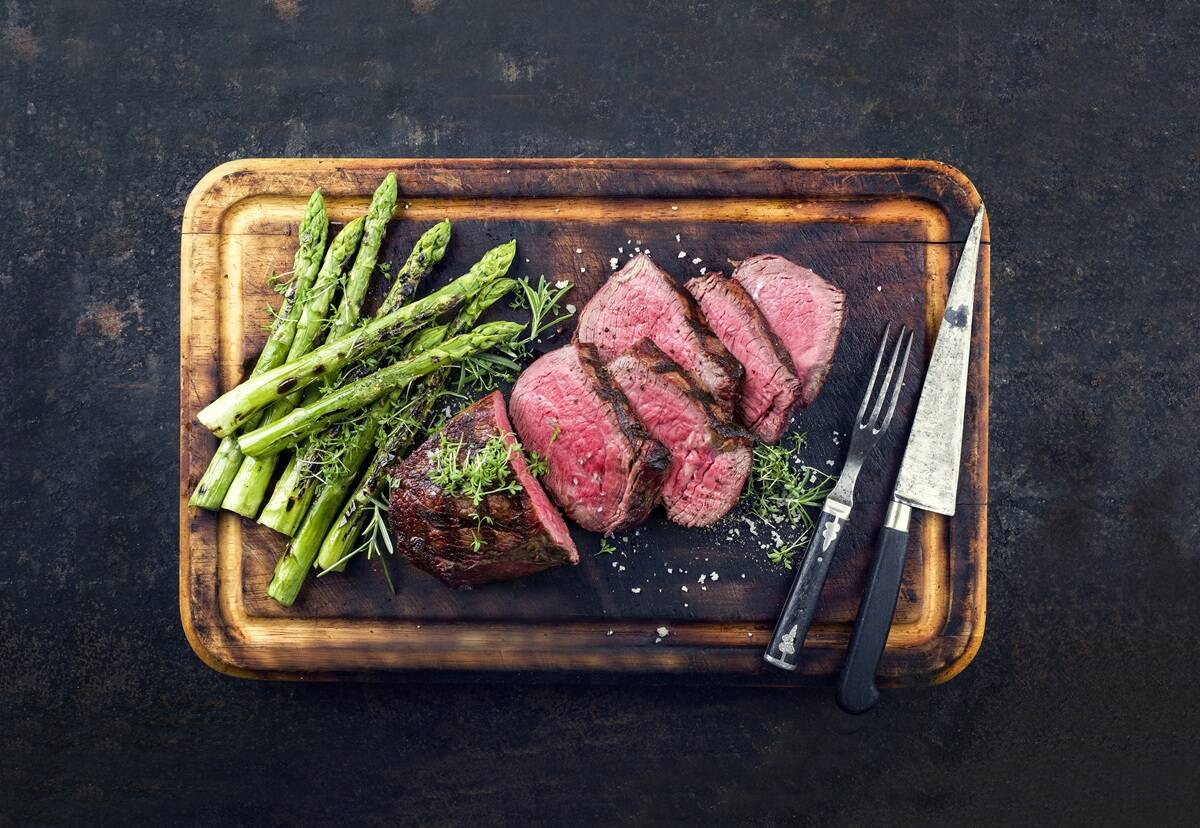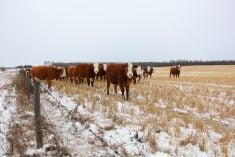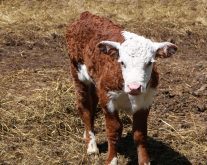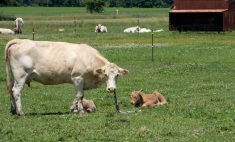Calving time is just down the road and questions dealing with limb injuries in newborn calves are about to become daily entries in large animal clinics serving beef herds. Next, are dairy calves with crippling limb injuries throughout the year. Many require veterinary care.
Limb injuries fall into the following areas:
- Congenital defects affecting limbs (e.g. tendon laxity and contracture). Circulation to the distal limb is affected and ability to move and stand is seriously hampered.
- Traumatic injury after birth when cows step on a leg and fracture long bones below the elbow of the front leg or below the stifle of the hind. Occasionally, large bones of the front (humorous) or hind (femur) bones surrounded by heavy muscle are injured by trauma and often require surgery to repair. Displacement of growth plates at either end of the long bones can alter future growth patterns.
- Frozen feet, front or back, often occur during dystocia when cows and heifers are exposed to cold weather while calving, or females lack the mothering ability to get calves up and around.
- Injuries incurred during assisted births, when traction is applied incorrectly.
Most veterinarians agree that contracted tendons are the most common limb abnormality seen in newborn calves. Legs are flexed in position or knuckled over, making it difficult for the newborn calf to stand and nurse. Contracted tendons have several potential causes. Potential causes, according to Dr. Carla Huston, Mississippi State Veterinary College, include physical damage, genetic origins, nutrition and viral infections such as BVD. In most cases, contracted tendons are a physical consequence of a large calf forced to keep its legs in a flexed position during the last few weeks of gestation, a view shared by Dr. Andrew Niehaus, Ohio State Veterinary College in the January 2023 issue of Canadian Cattlemen. Nutrition is often overlooked as a cause of laxity. Niehaus contends females pushed in their last trimester with too much protein and energy may birth calves with developmental problems in joints and bones. A shortage of vitamins and minerals may also play a role. Ensure brood cows receive adequate vitamins and minerals through pregnancy. In selenium-deficient areas, general weakness develops when selenium levels are inadequate.
Prolonged calving (dystocia) can be a prelude to broken limbs when the “inexperienced” try to assist. Placing chains or straps incorrectly often causes fractures. Placing chains so they span a joint (one-half hitch above and one below) will prevent most fractures when traction is applied.
Read Also

Building demand together: The impact of Canada’s beef import levy
The beef import levy has become a central tool for ensuring balance in Canada’s beef industry
When calving is delayed in cold weather while feet are exposed, freezing becomes a serious issue. The same hap- pens when calves lie on frozen ground without sufficient bedding. Frozen feet frequently result in calves losing entire digits. Depending on the degree of frost, tissue loss starts at the coronary band. Most calves with frozen digits show evidence of tissue loss by a week to 10 days post-calving. Euthanasia is usually the most humane outcome. Meloxicam for pain should be administered until decisions are made.
Occasionally, cows step on newborn calves, or young calves are trampled by stampeding cows trying to protect calves from predators. Some fractures are more easily repaired than others, depending on their location on the leg. Usually legs break at the growth plate, straight across. Calves that have their legs realigned, with fractures set in a splint or cast, often respond very well. The cast or splint prevents bending.
Fractures higher on the leg make stabilizing the weight- bearing force more difficult. It’s important to locate the fracture when deciding what type of appliance to use. For example, a fracture above the growth plate means the cast shares leg weight much more than a splint can.
Veterinarians use a variety of methods to immobilize fractures. First, producers must immobilize the fractures while en route to a clinic. PCV pipe (split lengthwise) works well as a splint after the leg is well padded.
Once at the clinic, veterinarians have time to assess fractures: what bone(s) are involved, how old, nature of the dam and whether the fracture is compounded (open wound). X-rays become an important part of fracture assessment and choice of repair. The potential value of the calf comes into play.
Fractures of the cannon bone are usually immobilized with a cast. Fiberglass casts are often used as they are more resistant to moisture. For fractures above the fetlock that may involve a growth plate, stability is crucial and different approaches become important, up to and including pins placed through the bone and incorporated into the cast (pin casting). Thomas splints, also used in large dogs, support the axillary region and can be used for higher fractures.
Dr. Andy Acton, Deep South Animal Clinic, Saskatchewan, enjoys the challenge of fractures in young calves. In the January 2011 issue of Canadian Cattlemen, he talked about first aid for fractures.
“You need to get a veterinarian involved in treatment, so the calf will have the best chance, but it may be a few hours before a veterinarian can attend. Most fractures we see in young calves are not open wounds or compound fractures, so there’s no infection. But if we don’t do a good job of protecting a broken limb and it becomes open, the chances for survival plummet quickly.”
To prevent calves from bearing weight on an injured leg, slings can be used — like a human arm sling that holds your arm against your chest to reduce movement. In calves, for the front leg, there is a Velpeau sling and an Ehmer sling for the hind legs. Videos are available online to show how they are tied.

















